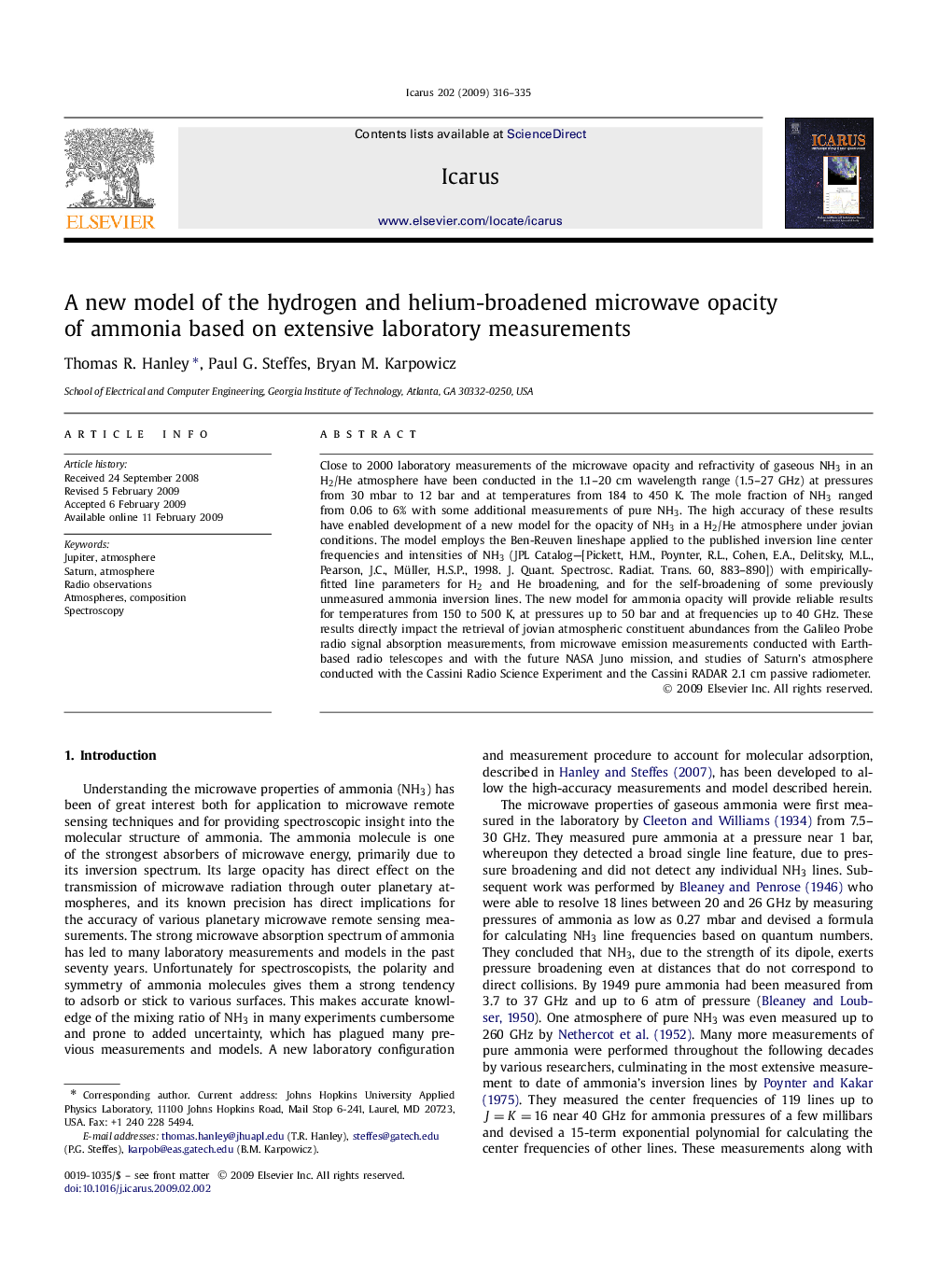| Article ID | Journal | Published Year | Pages | File Type |
|---|---|---|---|---|
| 1775118 | Icarus | 2009 | 20 Pages |
Close to 2000 laboratory measurements of the microwave opacity and refractivity of gaseous NH3 in an H2/He atmosphere have been conducted in the 1.1–20 cm wavelength range (1.5–27 GHz) at pressures from 30 mbar to 12 bar and at temperatures from 184 to 450 K. The mole fraction of NH3 ranged from 0.06 to 6% with some additional measurements of pure NH3. The high accuracy of these results have enabled development of a new model for the opacity of NH3 in a H2/He atmosphere under jovian conditions. The model employs the Ben-Reuven lineshape applied to the published inversion line center frequencies and intensities of NH3 (JPL Catalog—[Pickett, H.M., Poynter, R.L., Cohen, E.A., Delitsky, M.L., Pearson, J.C., Müller, H.S.P., 1998. J. Quant. Spectrosc. Radiat. Trans. 60, 883–890]) with empirically-fitted line parameters for H2 and He broadening, and for the self-broadening of some previously unmeasured ammonia inversion lines. The new model for ammonia opacity will provide reliable results for temperatures from 150 to 500 K, at pressures up to 50 bar and at frequencies up to 40 GHz. These results directly impact the retrieval of jovian atmospheric constituent abundances from the Galileo Probe radio signal absorption measurements, from microwave emission measurements conducted with Earth-based radio telescopes and with the future NASA Juno mission, and studies of Saturn's atmosphere conducted with the Cassini Radio Science Experiment and the Cassini RADAR 2.1 cm passive radiometer.
